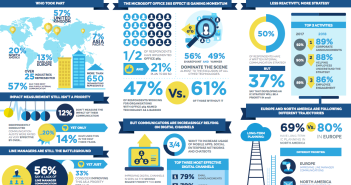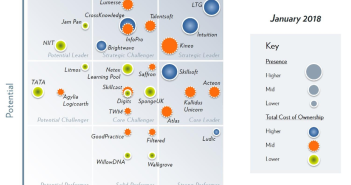
What’s unconscious bias training, and does it work?
Editor’s note: Research suggests that there is not one approach to dealing with bias at work. When it comes to unconscious bias training, beware of unintended consequences.

Editor’s note: Research suggests that there is not one approach to dealing with bias at work. When it comes to unconscious bias training, beware of unintended consequences.

Editor’s note: The CIPD has carried out a large research study into the quality of jobs in the UK. There’s loads of detail to pick over but one statement stands out: “Nearly half of all jobs fail to provide decent career development.” And prospects for development are worse for those in society who are worse off.

Editor’s note: It’s interesting to see that learning behaviours such as inquiry and curiosity underpin the two traits discussed here – cognitive diversity and psychological safety. Useful insights here into helping teams work more effectively.

Editor’s note: This is a really good round-up of research into rewards and motivation and how rewards can lead to negative unintended consequences.

Editor’s note: Deloitte has just published its fifth annual human capital trends report. it is based on research of more than 11,000 HR and business executives around the world. There is so much in here but it is well worth reading. The chapter on learning and careers focuses on the need for organisations to develop a learning culture.

Editor’s note: New research shows that there is no link between a student’s preferred learning style and the outcome of their learning. This isn’t the first research to come to this conclusion. Time to stop using learning styles in L&D.

Editor’s note: L&D might have some lessons to learn here. In the education sector, technology that nudges students to engage in learning has the opposite effect. Employers need to understand how best to deploy such approaches to avoid unintended consequences.

Editor’s note: What do you know . . . technology is a significant barrier to internal communications. There are some interesting stats and insights here, taken from a recent piece of research into internal communications in more than 650 organisations. The research provides some good tips on the most effective ways to communicate with employees.

Editor’s note: This is useful research for establishing what institutions and media Britons trust. The research also provides some insight on businesses and why trust in them is relatively low. Some good big picture data on trust here.

Editor’s note: Chairman of the Learning and Skills Group Donald Taylor has analysed the job role, age and gender of the more than 2,000 members of the group. His findings show that women are less likely to be in roles with more authority than their male counterparts. That’s not true across the board but the picture is bleak. Important and sobering findings.

Editor’s note: A problem with research in the social sciences is that it does not replicate, which is why this research by Carol Dweck is important. This research sets out to test if a growth mindset intervention had a positive impact in school settings. The answer is that it did. What’s important here is why this research methodology matters.

Editor’s note: This piece of research from LinkedIn Learning looks at learning trends impacting on L&D, employees, managers and executives. An interesting read. Note it calls L&D professionals ‘talent developers’. A good title?

Editor’s note: Will Thalheimer presents his new evaluation model. Take note of what, according to evidence, works and what doesn’t – it may (or probably won’t) come as a surprise.

Editor’s note: Towards Maturity launched their latest benchmark research at this week’s learning technologies conference. It has a new approach to the data which means new actionable insights.

HR and learning analyst has just released its market analysis of digital technology vendors. Interesting to see who is new on the scene and the 12 trends that Fosway says are impacting on learning technologies. Might make for quite challenging reading.
